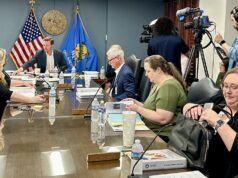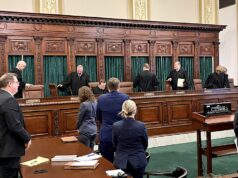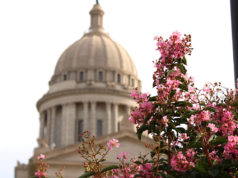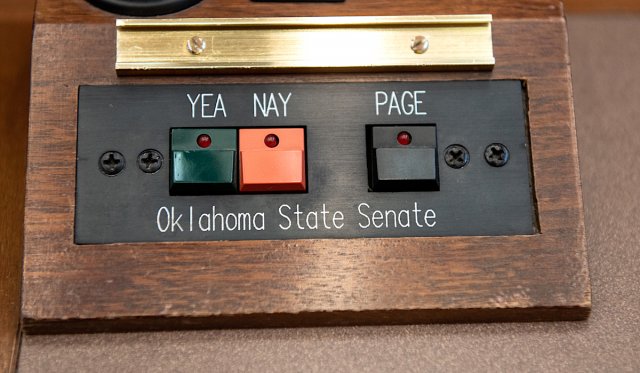
When the Oklahoma Legislature’s appropriations chairmen meet each week to negotiate next year’s state budget, they work from a stack of spreadsheets, notes and financial data. On the top of those papers sits the sheet for “common education.”
“Every year, education is what we start off with. Every single meeting, our education subcommittee is spreadsheet No. 1 for the House and Senate,” said House Appropriations and Budget Committee Vice Chairman Kyle Hilbert (R-Depew). “But it’s also where we finish. It’s the biggest dollar amount, so it’s the one that we spend the most time talking about. So this year is not unique in that regard, trying to figure out where both chambers stand.”
Finding common ground on education funding is often key to unlocking the rest of a year’s budget agreement. This year, negotiations between the House and Senate involve debate over whether to provide the Oklahoma State Department of Education enough additional funding to implement a class-size cap.
House leaders would like to increase common education funding by more than $135 million in order to trigger an existing state statute — created in the historic 1990 education changes of HB 1017 — that would mandate lower classroom sizes.
Senate Appropriations and Budget Committee Chairman Roger Thompson, however, is concerned that a funding formula reform signed into law earlier this month could have a negative impact on some rural schools if the class-size mandate also takes effect. (Currently, school districts can be funded based on their enrollment from two years prior if that number is higher than the current or most recent year’s enrollment. The reform bill signed recently eliminates the two-year look back.)
“The biggest expense you have are teachers. If I lose 10 students in one of the rural schools, I don’t lose 10 math students or 10 science students or 10 history students. They’re spread across the board. So I’m losing teachers that are going to be difficult to hire back,” said Thompson (R-Okemah). “So all of a sudden, if we give enough money that we kick in the 1017 [mandate] where they have to have smaller classroom sizes, and they’ve got to have teachers in those classrooms, how do I harmonize those? I don’t see how the one-year look back works yet.”
Thompson emphasized that he voted against HB 2078, which eliminates the two-year look back starting with the 2022-2023 school year. He said rural school superintendents in his eastern Oklahoma district have told him that they do not want the class-size mandate to be triggered.
“The House has been pushing for a little over $135 million in addition to the funding they presently have to kick in 1017 (class size limitations),” Thompson said. “I’m not there. I’m just not there, and I don’t see a pathway for me to be there at the moment.”
On the other hand, Thompson said the Senate education budget proposal includes about $27 million in additional funding for textbooks.
Hilbert, meanwhile, confirmed that triggering the class-size cap is a goal of House Republicans.
“That’s a big investment in education to get to that point, but it’s something that has been a priority for us,” he said.
Rep. Mark McBride (R-Moore) chairs the House Appropriations and Budget Subcommittee on Education. He also expressed support for at least $135 million in new state appropriations for common education.
“That’s a big one we would like,” McBride said, adding that the House education budget proposal includes a few line-item elements, such as the curriculum tool Imagine Reading. “There are some line items in there that the Senate doesn’t have. (…) So I think we’re a ways apart — the Senate, the House and the governor. I don’t know that for a fact, but I know as of my last meeting we were.”
Stitt: ‘We would like to be in the room’
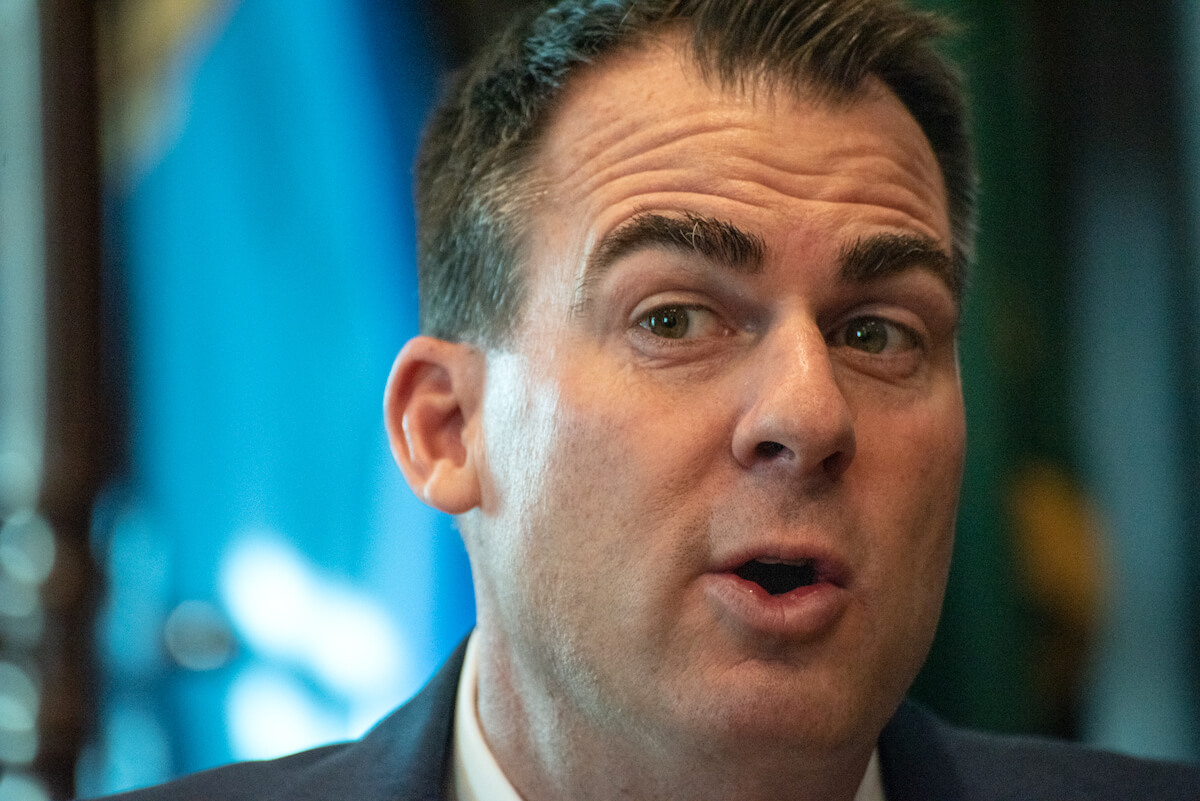
Speaking of Gov. Kevin Stitt, the first-term governor appears to be taking a different approach to this year’s budget negotiations after chiding legislative leaders last year for not following his lead.
Informed of the House and Senate debate over whether to trigger the class-size mandate, Stitt said that “lower class sizes are always better, so however we can get there for our students (is good)” before deferring to his legislative partners.
“As far as a dollar amount of money going in, those are still negotiated items between the House and the Senate,” Stitt said, seeming to acknowledge the historical precedent he tried to buck last year. “They write the budget, and we look forward to engaging them at the appropriate time. But right now our team has not been in the meetings for the last several weeks.”
Asked his opinion about not being in the House and Senate budget meetings right now, Stitt said he has delegated the topic to Secretary of State Brian Bingman and Chief Financial Officer Amanda Rodriguez.
“We would like to be in the room, but they’re working on, I guess, some things between them,” Stitt said. “Right now, we’re just kind of waiting on them to kind of agree on some numbers, and then we’ll sit back down with them.”
Additional federal funding complicates conversation
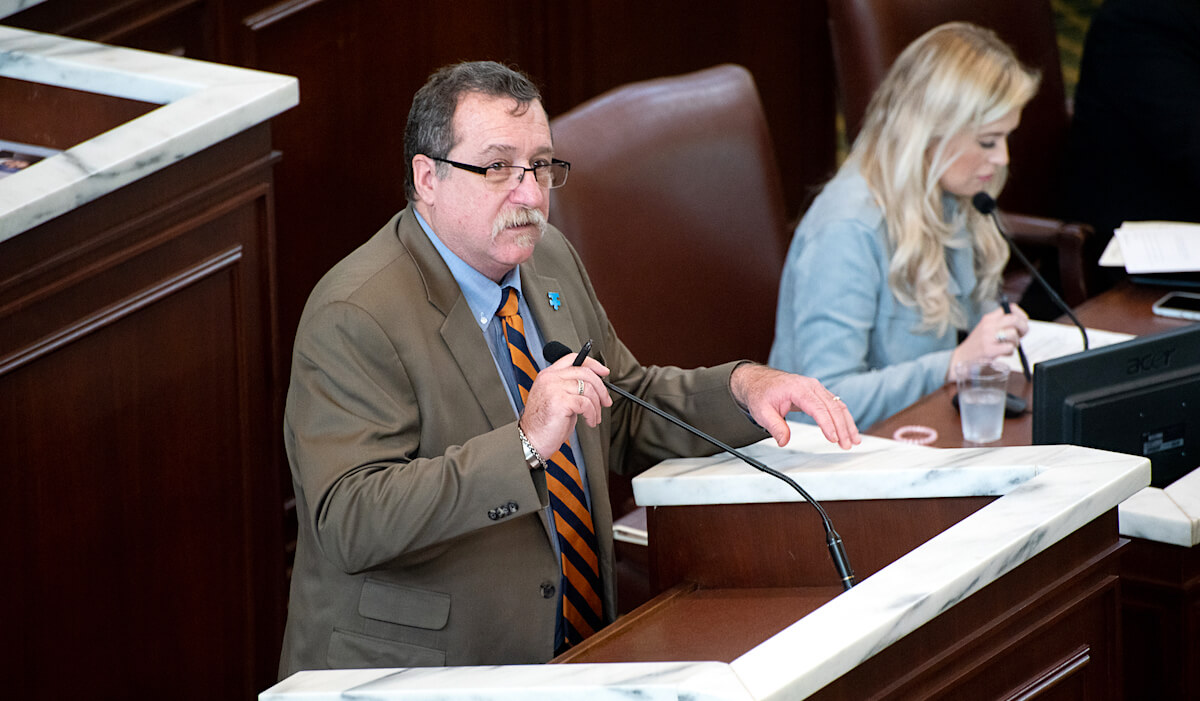
Complicating the numbers being discussed by legislative budget leaders is a glut of federal funding heading to Oklahoma for education purposes under the auspices of COVID-19 relief and/or economic stimulus.
Thompson said that between money sent to the Oklahoma State Department of Education and Title I dollars sent directly to school districts based on poverty levels, nearly $1.5 billion from the latest federal relief packages will be going to K-12 schools. Hilbert said that if last year’s two CARES Act cash infusions are combined with the American Rescue Plan passed this year by Congress, the number is closer to $1.9 billion.
Either way, the substantial federal stimulus for schools is giving legislators more to think about when crafting the state budget.
“I think that’s probably one of my biggest concerns, and that’s something I’ve shared with Superintendent (Joy) Hofmeister,” Hilbert said. “With the money she has available at OSDE — and with the money the governor has control over, the pot of money coming to states — we want to make sure we are investing that in truly one-time funding needs and critical needs for the state, as well as COVID-related and health care-related issues that a lot of it was intended for.
“What we don’t want to do is use this federal money to start a lot of new programs, and then when the federal money runs out, constituents, citizens, agencies get dependent on these programs, and then they come to the state and the state can’t afford them because a recurring expense was funded by one-time federal dollars.”
McBride offered a slightly different perspective on the question of how additional federal funding should be factored into state appropriation decisions.
“I think our priority is to do our job year to year, and just because they’re getting the CARES money or the ARP money, that’s just going to be on top of [state appropriations],” McBride said. “And I expect them to manage that money well and not come back to the Legislature in 2028 or whatever and say, ‘Hey, you cut us.’ No, we didn’t cut you. You spent all your money. Our appropriations should continue to be the same. I don’t think we should reduce the appropriated dollars just because they’ve got federal dollars. I think that makes the whole thing unstable.”
Savings seem likely, corporate income tax blocked
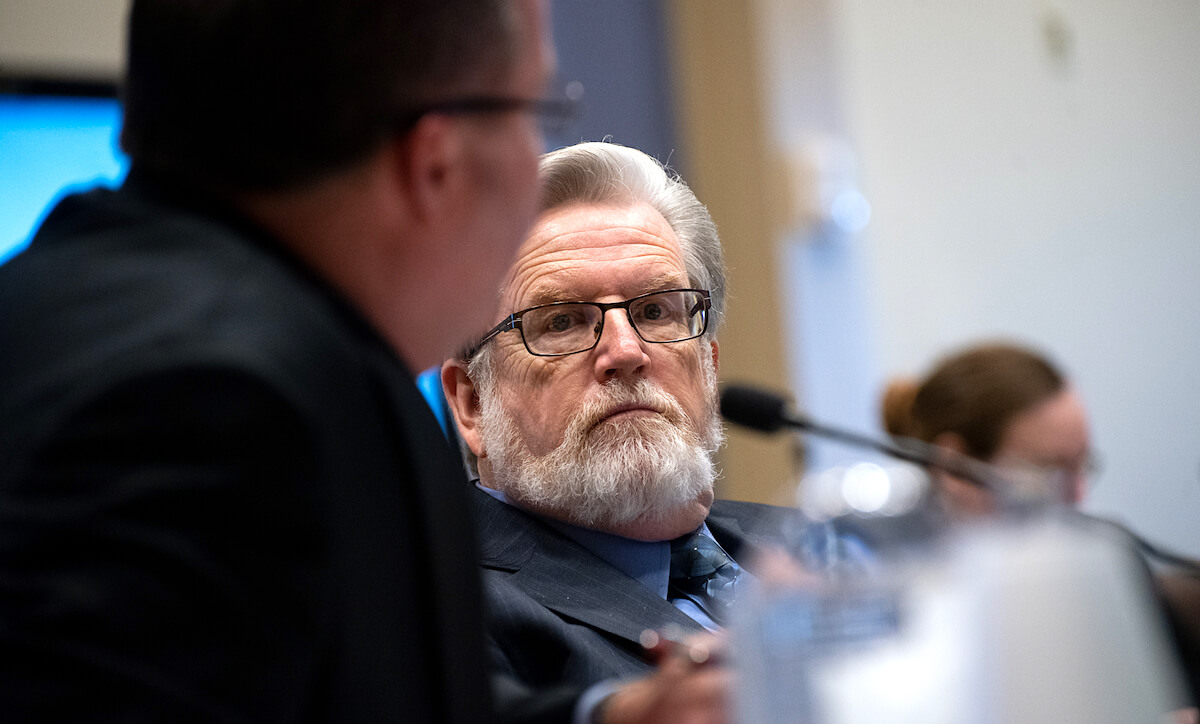
Stitt said the state’s overall budget picture has leaders in a prime position to save money for a rainy day.
“We have a $1.6 billion surplus, and I have been pretty adamant that we have to look at recurring revenue and then keep our expenses in line with recurring revenue,” Stitt said. “So some of this is one-time funds, and I think it wouldn’t be appropriate to increase the base-level expenses above recurring revenue. This is a great opportunity to save money and replenish our savings account.”
Legislators used a substantial amount of the state’s savings accounts nearly one year ago to address a Fiscal Year 2020 revenue failure and avoid the even deeper Fiscal Year 2021 cuts that Stitt sought at the time. Lawmakers ultimately cut most state agencies by 4 percent, but they held the common education cut to 2.55 percent.
While all parties seem to agree that money cut from last year’s common education budget will be restored, disagreement over how much more money should be sent to schools has combined with disputes over tax cut proposals to leave the two chambers at odds in the middle of April.
“We’ve got a lot of things up in the air right now,” Thompson said.
Thompson made his remarks for this story more than 24 hours before Senate President Pro Tempore Greg Treat (R-OKC) announced that the Senate would not be hearing a bill to eliminate Oklahoma’s corporate income tax authored by House Speaker Charles McCall (R-Atoka).
“There is not an appetite to do the corporate income tax cut in the Oklahoma State Senate. There is not the appetite within my caucus. I don’t have that appetite,” Treat told reporters Thursday. “We are living in a time that is uncertain financially, having come through COVID. We are sitting very nicely financially as a state, but I need to remind you that we cut the budget by $1.3 billion last year when it turns out we needed to cut it about $800 million. So about $500 million of the billion-dollar surplus comes from cutting deeper than we had to last session.”
Treat said his caucus is still considering whether to hear McCall’s other tax reduction bill, which would lower the functional rate on personal income taxes by instituting a new tax credit. But he reminded his colleagues of the 2017 and 2018 legislative drama surrounding the need to improve state revenues.
“I do not think this is an appropriate time to be looking at a $642 million-over-the-course-of-five-year hit to the budget. I was here three sessions ago when we had the teacher walkout and effort together to come up with the revenue to pay for our obligations. I do not believe nor does my caucus believe that the corporate tax cut is appropriate at this time,” Treat said. “It’s not a political decision, it’s a policy decision. The politics of it, as a Republican, yes, we cut taxes. That’s a great political statement. We’ve got to get beyond the politics of it and see if it’s the right policy. And when you look at the corporate tax, it is an unstable source of revenue, there’s no doubt about it. But about $90 million of it goes off the top to things like Teacher Retirement and other important things. So you can’t just look at the $642 million.”
Hilbert advances bill on charter school funding
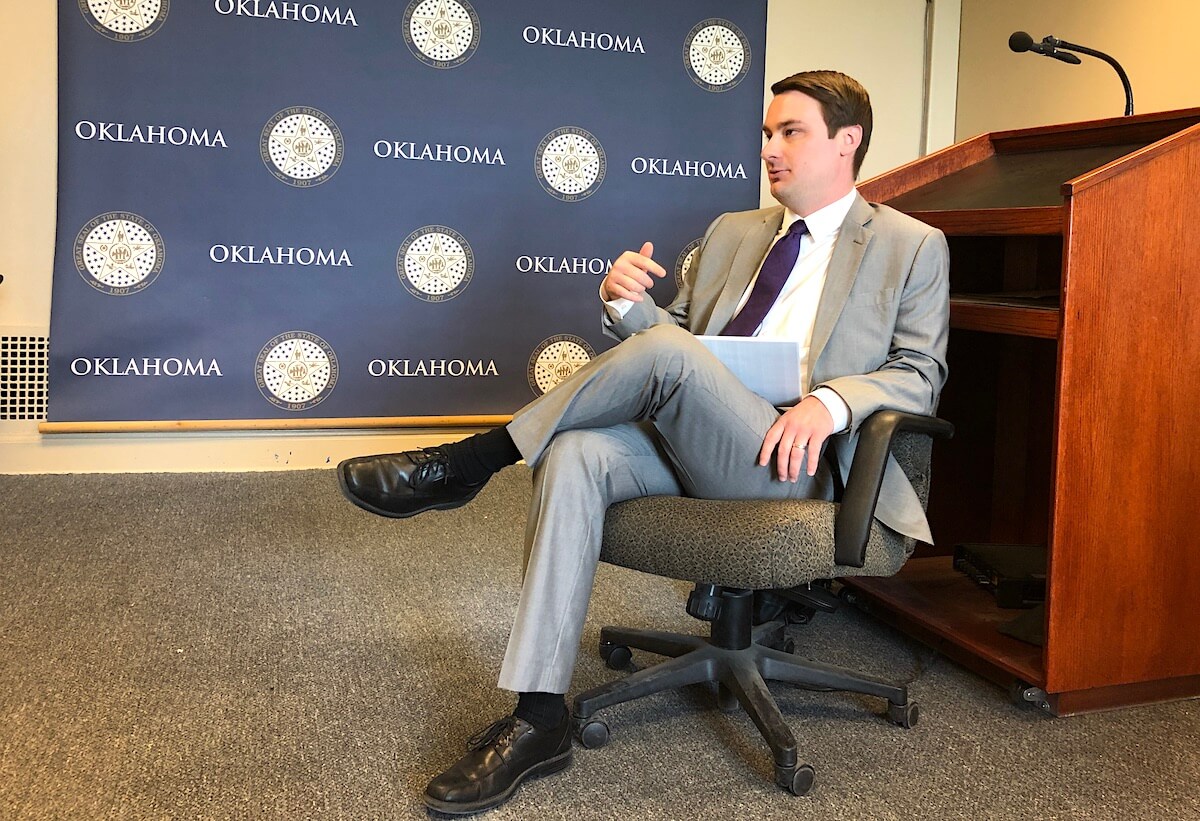
Beyond the question of federal dollars, the class-size trigger and the desire to replenish savings accounts, legislative budget leaders have even more to consider regarding common education.
The State Board of Education recently resolved to provide public charter schools — including virtual academies — with access to the same funding streams as traditional public school districts, a controversial decision that is being challenged in court and debated in the halls of the State Capitol.
Hilbert is attempting to strike a compromise through language he put into SB 229 last week.
“It negates the board’s decision. It says charters shall not receive property tax dollars,” Hilbert said. “Because there’s discussion on whether charters should or shouldn’t get local property tax dollars. And then there’s the legal question of whether they can or can’t.”
Hilbert said his proposal would eliminate the legal question while still providing more funding to brick-and-mortar charter schools.
“Let’s just say they can’t get local dollars. Now, in lieu of property tax dollars, let’s give brick-and-mortar charter schools additional state funding through marijuana taxes for their building fund purposes,” he said. “(My bill proposes) doing it in such a way that is equitable and tied to the percentage of students that are enrolled in brick-and-mortar charters and then them getting the funds based on a per-student basis.”
Hilbert’s proposal advanced 14-0 through the House Common Education Committee. Thompson said he had not read Hilbert’s bill, but he believes the State Board of Education ruling attempted to solve one problem by creating another.
“That is not good for public education. That’s not good for rural education, for sure, especially as it stands. Now, if you can restrict some of that back to brick and mortar — that you’ve got to have a true brick-and-mortar charter school — then OK, maybe we can talk about that,” Thompson said. “But right now, we’re going to do the virtual schools across the state? In my Senate district, I’m not aware of any brick-and-mortar charter schools, but if we have to start paying some of the ad valorem (property tax revenue) to the virtual (charter) schools, that’s really going to detract from funding for public education.”
Stitt, on the other hand, said the State Board of Education decision has left him “excited about funding charter schools more appropriately” because it will provide parents with “more options, which are always good.”
If the same statement about options applies to state budget negotiations, the Oklahoma Legislature has plenty to be pleased about halfway through April.
“We’re just at a particular point where we are still in budget negotiations,” Thompson said. “We have a lot of things we have agreed on with the House, and as soon as we reach our agreement, we will invite the governor back into our conversation to see what the executive branch wants to do. We’ve been meeting the last three or four weeks with just the House and Senate.”
Thompson said he wants to save at least $600 to $700 million in next year’s budget because he believes the state and country will see prosperity for about a year and a half. Hilbert agreed that saving money would be prudent.
“I think most in the building agree, we don’t need to spend all of our spending authority this year. We need to save some money back for the oncoming downfall which at some point will occur,” Hilbert said. “We saw in 2009 when the last time large amounts of federal money were pumped into this state, the state’s budget got really high, and then for the next decade everybody compared things to that high-water mark year of 2009, and the state couldn’t reach that mark again.”
Hilbert said that means the additional federal funding should be considered in state appropriation decisions.
“When I met with my superintendents, they wanted to see the cut restored for long-term, stable, dependable budgeting,” Hilbert said. “And they don’t want to see the federal money used against them. (They do not want us to say), ‘Oh, you’re getting all this federal money, so we don’t need to send you anything.’ And I think that’s a valid concern to consider, but also we’re making sure we are being prudent and doing the best we can with taxpayer dollars, because, at the end of the day, this year we do have federal dollars, they are still taxpayer dollars and we need to do the best we can with them.”










